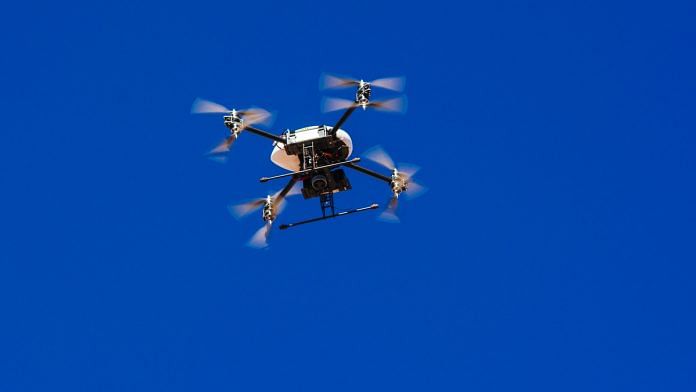India can show the world how drone technology can be used to bring about socially impactful services in agriculture and public health.
Last month, the Indian Directorate General for Civil Aviation issued its first policy allowing for commercial drone operations. This comes after four years in which private operations of drones were essentially banned. Although the new regulations are fairly conservative in a global context, India now has the opportunity to become a global leader in drones.
Although they will be used by a small number of trained operators, the benefits of drone technology have the potential to touch the lives of all 1.3 billion Indian citizens. Agriculture remains a lynchpin of the Indian economy, accounting for 18% of the country’s GDP and employing 50% of the country’s workforce.
Starting in December, the Indian state Government of Maharashtra, in collaboration with the World Economic Forum’s Centre for the Fourth Industrial Revolution, is planning to undertake the largest drone mapping operation in history, initially covering two districts of the state. These maps will be completed during the winter Rabi cropping season, with the data housed in a utility that will be used by government departments and private sector companies to help provide precise information about crop yields, soil health, pest outbreaks and potential irrigation upgrades to farmers and others working in the agricultural economy. These efforts will be supported by a multistakeholder committee that will help ensure that the benefits of these data collection efforts are broadly distributed while safeguarding public safety and farmer privacy.
Drones can also play an important role in public health in India. According to a recent government survey, over 7 in 10 Indian children are not receiving timely vaccinations. The Government of India launched the ambitious Mission Indradhanush project to address this challenge, but in a number of districts simply getting the vaccine supply to remote health workers while maintaining a temperature-controlled supply chain is a tremendous challenge. Delivery drones could help bring vaccines to remote clinics to support public health campaigns on a just-in-time basis while keeping them suitably cool. Similar efforts to deliver blood products to remote parts of Rwanda have already helped thousands of patients.
India has the opportunity to both deliver improved services to its people through the use of drones, develop a robust drone services sector, and become a world leader in demonstrating how this technology can be deployed in socially impactful ways.
However, a number of questions remain regarding whether India’s leaders will take advantage of this opportunity. The newly issued regulations are a good start, but to fully capture the benefits of drones the regulations will need to evolve to allow for flights beyond visual line of site, multiple aircraft per operator, and eventually autonomous operations. These are issues that governments around the world are struggling with, but a few first movers such as Switzerland and Rwanda have developed new approaches to drone regulation that allow them to realize the benefits of these types of operations.
If the Government of India is willing to take some calculated risks – such as starting small operations in pilot areas but rapidly learning and iterating, for example – India can become a global leader in drone services. However, it will require strong collaboration between government, business and civil society leaders to fully realize this vision.
Timothy Reuter is the Project Head of World Economic Forum’s Civil Drones for Tomorrow’s Commerce.
This article was originally published on The World Economic Forum’s website. Read the original article here.



